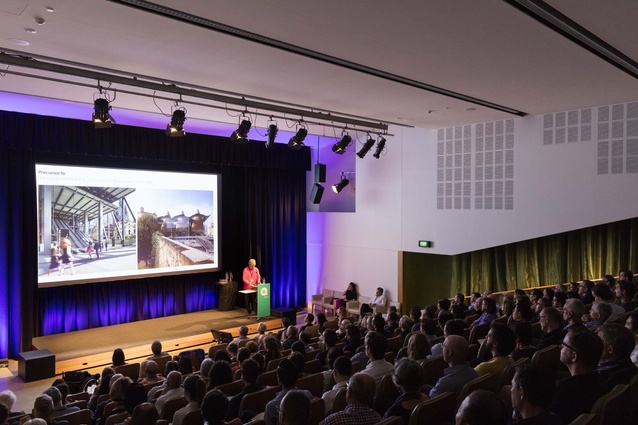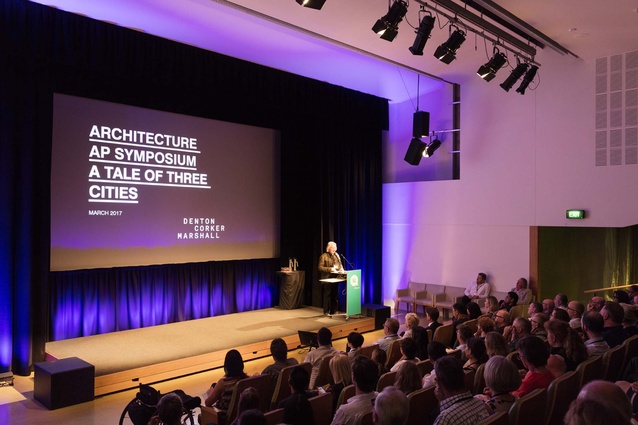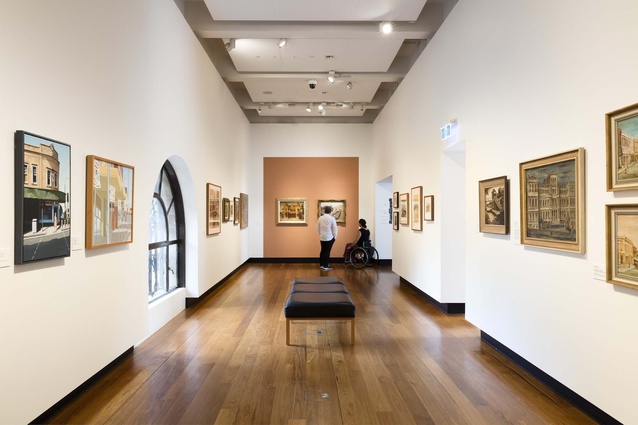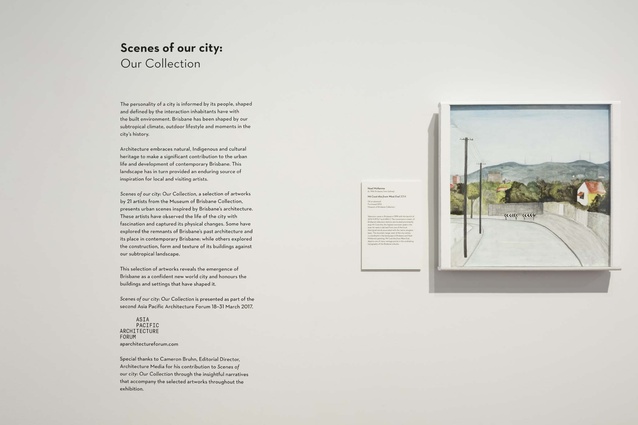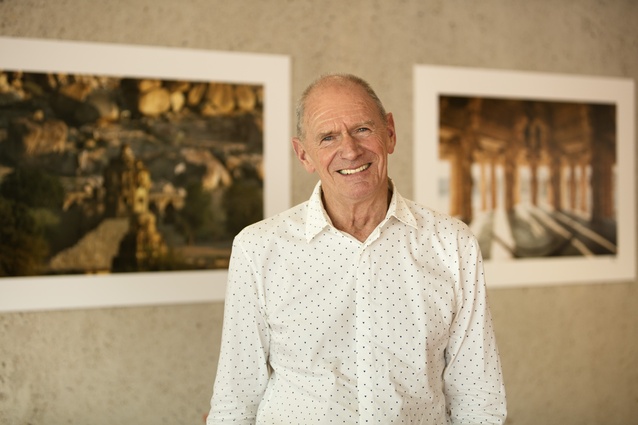Architecture, influence and altruism: 2017 Asia Pacific Architecture Forum
With the unmistakeable signs of urban development punctuating its unseasonably grey skies, Brisbane has welcomed a bevy of local and international talent for the 2017 Asia Pacific Architecture Forum. This series of distinct but complementary events is a collaboration between founding partners Architecture Media and the State Library of Queensland. The forum has returned to the River City for its second year and runs from 18 to 31 March.
Participants took part in a rich variety of exhibitions, tours, speaking sessions and workshops, which shared the common theme of architecture in the Asia Pacific region. The signature event was the ArchitectureAP Symposium, a full-day showcase of excellent speakers from a diverse range of practice backgrounds, held at the State Library of Queensland on 24 March.
Pritzker Prize laureate Shigeru Ban was the headline speaker for the symposium, in which he discussed his disaster relief projects. Spanning two decades, Ban’s portfolio of humanitarian projects chiefly responded to the aftermath of seismic events in the Asia Pacific, both earthquakes and tsunamis. As he shared his structural and material innovations with paper and cardboard, several commonalities and divergences became apparent, in regards to the needs that disasters provoke within different sectors of the Asia Pacific. The similitudes and variations of the climate, economy, density and culture of neighbouring nations formed a significant component of the dialogue that emerged in response to the presentations.
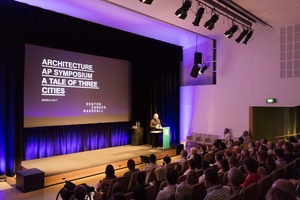
Other high-profile speakers included Ivan Harbour of Rogers Stirk Harbour and Partners, Thingsmatter duo Savinee Buranasilapin and Tom Dannecker, and John Denton of Denton Corker Marshall. Providing the perspective of an Australian studio with a long history of international practice across the Asia Pacific, Denton articulated many of the evolving cultural nuances in procuring, designing and constructing commercial and public works throughout Asia as a foreign national. Alongside a vast repertoire of office and multiresidential projects with inherent economic imperatives, Denton presented a series of Australian embassies in Beijing, Tokyo and Jakarta, which conveyed an added dimension of cultural sensitivity in perhaps the most overt architectural program of foreign nationalism. Ideas of cultural identity and diplomacy were poignant in the big picture of a forum bringing together delegates from such a broad region.
At the opening lecture of the 2017 University of Queensland Architecture Lecture Series, Wenhui Lim of Spark Architects also touched on her experiences in international practice. Lim shared how the fast pace and bold visions of Spark Architects’ Singapore studio has led to a strong body of work in China, where the practice now operates an office with impressive scope.
Though the architecture of the established New Zealand firm Warren and Mahoney stands in contrast to the work of Spark Architects, its expansion across the Tasman Sea into Melbourne and Sydney echoes similar themes. As principal Katherine Skipper explained at the ArchitectureAP Symposium, the practice’s international expansion made sense, given the proximity, common language and trans-Tasman clientele that Australia shares with New Zealand. Similarly, the parallels of language, culture and business in Singapore and China informed the path taken by Spark Architects into international practice.
Alongside well-known speakers, smaller-scaled studios and alternative modes of practice were also well represented across the forum. Gap Filler, a New Zealand collaborative that orchestrates temporary urban interventions, led a scenario-based workshop challenging conventional architectural approaches to problem-solving. Likewise, a lively night at the Brisbane Powerhouse following the Pecha Kucha event gave a platform for local voices, including Angus Munro (Marc and Co, Brisbane) and historian Janina Gosseye (University of Queensland). The event also saw young graduates Niini Mendonca and Kali Marnane share their six-month experience designing and constructing a preschool at the Ramapir No Tekro slum in India for the Anganwadi Project. The project delivers safe spaces for children and their mothers in underprivileged communities through inventive application of recycled materials.
Altruism in architecture was a reccuring topic among several speakers in the first week of the forum, from Mendonca and Marnane’s quiet, standalone project to the instantly recognizable global efforts of Shigeru Ban. In his presentation for the ArchitectureAP Symposium, Stephen Collier (Stephen Collier Architects, Sydney) carved out a middle ground in this arena, eschewing his acclaimed residential work to present the School-in-a-Box project, which he developed with the charity Sustain Education Art Melanisia (SEAM). The project aims to enhance literacy and education in remote Papua New Guinea. Collier shared his deceptively simple system to house a fully stocked classroom in a military-designed box, which is significantly smaller than a standard car. Collier’s architectural solution to logistical and environmental difficulties highlighted the breadth of architecture’s capacity in the region.
Likewise, Milinda Pathiraja’s standout presentation on behalf of the small Sri Lankan practice Robust Architecture Workshop (RAW) built on the humanitarian theme. Addressing the shortage of skilled construction workers in Sri Lanka following decades of civil conflict, RAW designed several projects that allowed unskilled soldiers and labourers to develop a trade, simultaneously reducing the cost of construction and meaningfully enhancing the prospective livelihoods of local workers. Though RAW’s approach is highly contextual, the practice’s social, economic and environmental aspirations resonate with many of the messages shared across the week’s events.
As the Asia Pacific Architecture Forum continues, the breadth of discussion surrounding architecture’s role in the region will further develop. The second week includes a Parlour-supported panel session on the topic of working in Asia; a tour of some of Brisbane’s most acclaimed architects’ own homes; and a diverse range of ongoing exhibitions hosted across Brisbane’s inner suburbs, including an exhibition of art inspired by Brisbane’s architectural history at the Museum of Brisbane. With so much diversity on display, there is a compelling sense of involvement among participants. The architecture of the Asia Pacific is not an object for external observation, but rather the reality to which we give shape.
The Asia Pacific Architecture Forum is a collaboration between founding partners Architecture Media and State Library of Queensland. Presenting partners are Artisan, Australian Institute of Architects, Brickworks, Brisbane Open House, Gap Filler, Garden Variety, Museum of Brisbane, Pecha Kucha Brisbane, The Queensland Art Gallery | Gallery of Modern Art (QAGOMA), Queensland University of Technology Creative Industries, Sherman Contemporary Art Foundation and University of Queensland School of Architecture.

